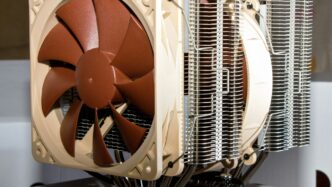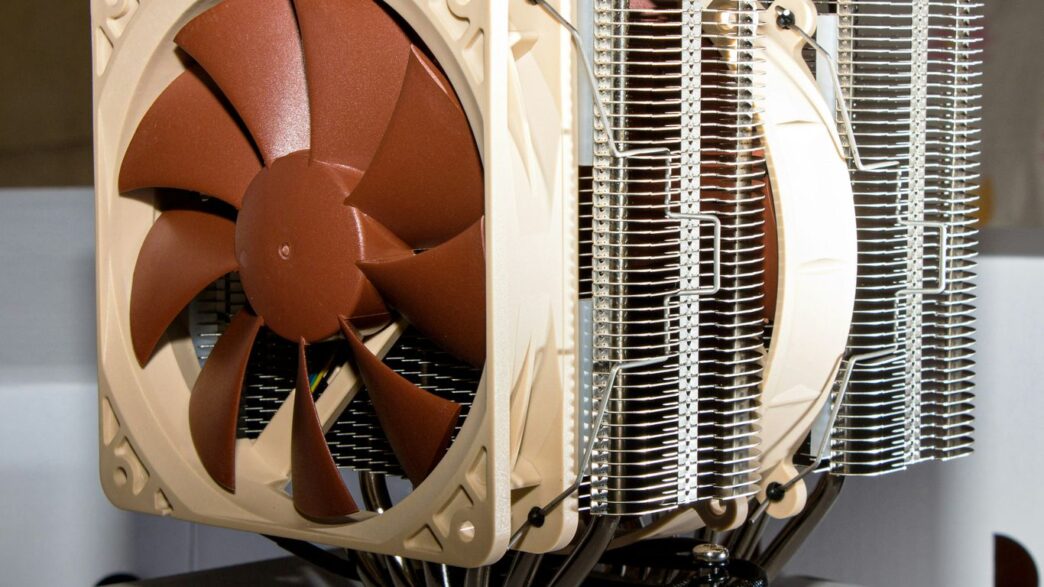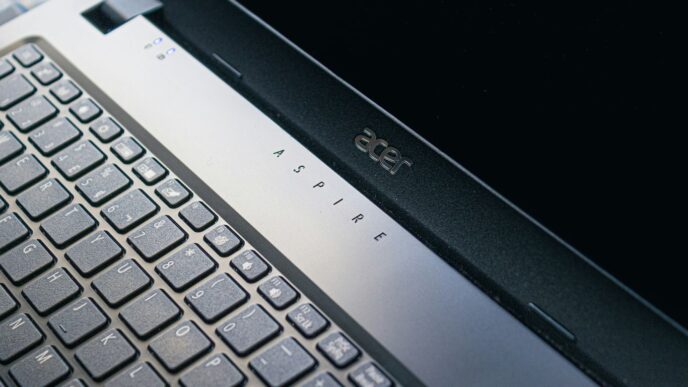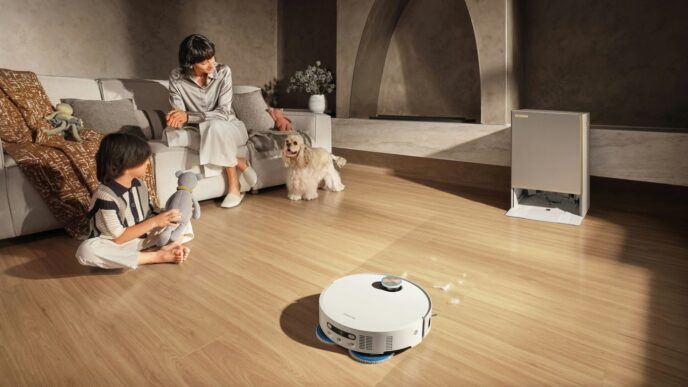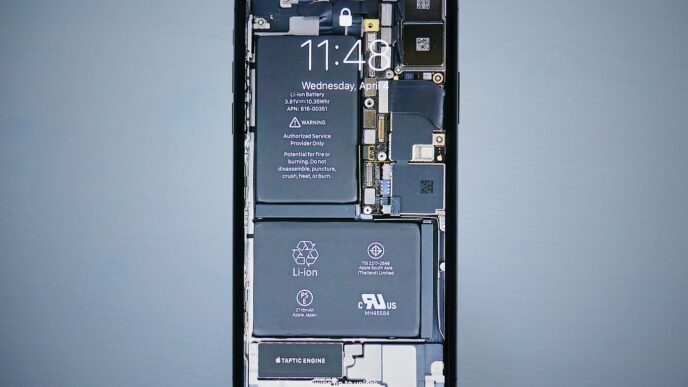Building or upgrading a PC can be exciting, but figuring out the best way to keep your components cool can feel a bit overwhelming. You’ve got all these options, and they all promise better performance. One of the most common ways to keep your CPU from getting too hot is by using an air cooler for PC. They’ve been around forever, and for good reason. This guide will help you sort through the different types, figure out what matters when it comes to performance, and how to get it all installed without too much fuss.
Key Takeaways
- When choosing an air cooler for PC, think about the heatsink size and how many heat pipes it has, as these directly affect how much heat it can move away from your CPU. More is generally better.
- Fan setup is important too. More fans and fans that move more air can help cool your CPU better, but also consider how they fit with the overall airflow in your computer case.
- Air coolers come in different styles, like tall tower coolers and shorter low-profile ones, each suited for different PC case sizes and builds. Fanless options exist for silence but might not handle heavy loads.
- Price matters, but you don’t always need to spend a fortune. Budget-friendly air coolers can do a good job for everyday use, while mid-range and premium options offer better performance for demanding tasks or overclocking.
- Installation involves checking if the cooler physically fits in your case and clears your RAM sticks. Applying thermal paste correctly is also key to making sure the cooler works as well as it should.
Understanding Air Cooler Performance Factors
So, you’re looking to keep your PC’s brain, the CPU, from getting too toasty. That’s where air coolers come in. But not all air coolers are created equal, right? There are a few things that really make a difference in how well they do their job. It’s all about how efficiently they can move heat away from your processor and out into your case.
Heatsink Size and Heat Pipe Count
Think of the heatsink as the big metal thing with fins that sits on top of your CPU. The bigger it is, the more surface area it has to spread out and get rid of heat. It’s pretty straightforward: a larger heatsink generally means better cooling. Many coolers also use heat pipes, which are like little highways for heat. These pipes have a liquid inside that turns into vapor when it gets hot, zips up to the heatsink, and then cools back down. More heat pipes usually mean heat can travel faster from the CPU to the heatsink fins. Some coolers use a copper base plate that touches the CPU because copper is good at grabbing heat, and then attach that to an aluminum heatsink, which is good at spreading it out.
Fan Configuration and Airflow
Fans are the workhorses that push air through those heatsink fins. The number of fans, their size, and how fast they spin all play a part. More fans, or bigger fans spinning faster, generally mean more air moving, which helps cool things down. It’s not just about raw speed, though; the design of the fan blades and how they’re mounted can affect how much air actually gets pushed through the heatsink effectively. Some coolers come with just one fan, while others have two or even three, often stacked on top of each other to really force air through.
Case Airflow Integration
An air cooler doesn’t work in a vacuum, so to speak. It needs good airflow within your PC case to do its best. If your case is packed tight with components or doesn’t have enough case fans moving air around, your shiny new air cooler might struggle. The air cooler pushes hot air out of its heatsink, but if that hot air just sits in your case, it’s not going to cool very well. Good case airflow means fresh, cooler air is constantly being supplied to the cooler, and the hot air is efficiently exhausted. It’s a team effort between your CPU cooler and your case fans. For example, the Arctic Freezer 36 is a great cooler, but it still relies on your case having decent airflow to perform at its peak.
Types of Air Coolers for Your PC
Alright, so you’re looking into air coolers, which is a solid choice for most builds. They’re generally simpler and often easier on the wallet than their liquid counterparts. But not all air coolers are created equal, and they come in a few different flavors. Understanding these types will help you pick the one that fits your rig and your needs best.
Tower-Style Air Coolers
These are probably what most people picture when they think of a CPU cooler. They stand tall, usually with a big block of metal fins and several heat pipes snaking up from the base. A fan (or sometimes two) is mounted on the side, blowing air through those fins. They’re popular because they tend to offer a great balance of performance and price. Because they’re designed to pull air from the front of your case and push it out the back, they can also help with overall case airflow if positioned correctly. You’ll want to make sure your case has enough height clearance for these, as they can get pretty big. Some of the beefier ones might even get close to your RAM slots, so always double-check compatibility.
Low-Profile Air Coolers
If you’re building a smaller PC, like a Mini-ITX or a slim desktop, a big tower cooler just isn’t going to cut it. That’s where low-profile coolers come in. They’re designed to be much shorter, fitting into tighter spaces. Don’t let their smaller size fool you, though. Many low-profile coolers pack in heat pipes and decent fans, giving them performance that can surprise you, often beating out those basic stock coolers that come with CPUs. They’re a really good option when space is tight, but you still want better cooling than the bare minimum. Just remember, they’re still blowing air, so good case airflow is still a plus.
Fanless Air Coolers
Now, these are a bit more niche. Fanless air coolers, also called passive coolers, rely entirely on a large heatsink and natural convection to dissipate heat. No moving parts means no noise, which is a huge plus if you’re building a silent PC. However, they have limitations. They generally can’t handle super hot CPUs, especially if you’re overclocking. They also really, really depend on good case airflow to move the hot air away from the heatsink. If your case is a bit of a sauna, a fanless cooler might struggle. They’re best suited for quieter systems with CPUs that don’t run too hot, or for users who prioritize silence above all else. For a look at some top-tier cooling hardware, you might want to check out the best CPU coolers available.
Evaluating Air Cooler Price Points

When you’re looking for a CPU cooler, the price tag can tell you a lot, but it’s not the whole story. You can find coolers that do a decent job without emptying your wallet, and then there are the high-end options that cost a pretty penny. It’s all about finding that sweet spot between what you need and what you can spend.
Budget-Friendly Options
For folks who just need a step up from the stock cooler that comes with your CPU, or for builds where every dollar counts, there are some solid choices. These coolers usually go for under $40. They might not win any awards for extreme overclocking, but they’ll keep your processor from overheating during normal use. Think of them as the reliable workhorses of the cooling world. You can often find good ones from brands like Thermalright, which has models that offer surprisingly good performance for their low cost. These are great for general gaming, office work, or any task that doesn’t push your CPU to its absolute limits all the time.
Mid-Range Performance Coolers
Stepping up a bit, we get into the mid-range. These coolers typically fall between $40 and $70. They offer a noticeable bump in cooling ability compared to the budget options. This is where you start seeing larger heatsinks, more heat pipes, and often better fans. These coolers are fantastic for gamers, content creators, or anyone who runs more demanding applications regularly. They can handle moderate overclocking and keep temperatures well in check even under sustained load. A prime example is the Thermalright Peerless Assassin 120 SE, which offers performance that rivals much more expensive coolers, often for around $36. It’s a popular choice because it hits that sweet spot of performance, noise, and price.
Premium Air Cooling Solutions
If you’re aiming for the absolute best air cooling performance, or if you have a high-end CPU that runs hot, you’ll be looking at the premium segment. These coolers can range from $70 up to $100 or even more. They feature massive heatsinks, advanced heat pipe designs, and top-tier fans. Some of these can even compete with entry-level liquid coolers. They’re built for serious overclockers, enthusiasts who want the quietest possible system, or users with CPUs that generate a lot of heat. The Thermalright Royal Pretor 130, for instance, sits in this category, offering exceptional cooling that can go head-to-head with some 360mm AIOs, often for around $50-$60, which is a steal for its performance level. While you pay more, you get the peace of mind that your CPU is running as cool and quiet as possible.
Installation Considerations for Air Coolers
Alright, so you’ve picked out a shiny new air cooler. Awesome! But before you get too excited, let’s talk about actually getting this thing into your PC. It’s not always as simple as just slapping it on. You’ve got to make sure it’ll actually fit and that you do the job right.
Case Clearance and RAM Compatibility
This is a big one, seriously. You absolutely need to check the physical dimensions of your cooler against your PC case’s specifications. Most cases will list a maximum CPU cooler height they can accommodate. If your cooler is too tall, it just won’t fit, or worse, it might hit the side panel. Tower coolers, especially the beefier ones, can also be quite wide. You’ve got to watch out for your RAM modules. Some massive coolers can overhang the RAM slots, making it impossible to install or swap out memory sticks. It’s a real pain if you find this out after everything else is installed.
- Check Case Specs: Look for ‘Max CPU Cooler Height’ in your case manual or on the manufacturer’s website.
- Measure Your Cooler: Note the exact height and width of the cooler you’re considering.
- RAM Clearance: Many cooler product pages will list RAM clearance height. If not, check reviews or forums for user experiences.
Motherboard Mounting Procedures
Getting the cooler attached to the motherboard is usually a multi-step process. Most modern coolers use a mounting bracket system. You’ll typically need to attach a backplate to the rear of the motherboard, then install standoffs, and finally secure the cooler itself onto those standoffs. Different CPU sockets (like Intel’s LGA 1700 or AMD’s AM5) have specific mounting hardware, so make sure you’re using the right parts for your motherboard. It can feel a bit fiddly, but taking your time here prevents damage.
Thermal Paste Application Techniques
This is where the magic happens – the connection between your CPU and the cooler. Thermal paste, or thermal compound, fills in microscopic gaps between the CPU’s heat spreader and the cooler’s base plate, helping heat transfer. Applying too little means poor contact and higher temps. Too much, and it can get messy and might not spread evenly. There are a few common methods:
- Pea Method: Squeeze a small, pea-sized dot of paste directly onto the center of the CPU.
- Line Method: Apply a thin line of paste across the CPU.
- Spread Method: Use a small spreader tool or even a gloved finger to spread a thin, even layer across the entire CPU surface. This is often considered the most reliable for even coverage.
Whatever method you choose, the goal is a thin, uniform layer that covers the CPU without oozing out excessively when the cooler is mounted.
Air Cooler vs. Liquid Cooler: Making the Choice
So, you’re trying to figure out if you should go with an air cooler or a liquid cooler for your PC. It’s a common question, and honestly, there’s no single right answer. It really boils down to what you need and what your setup is like.
For most people, a good air cooler is perfectly fine and often the smarter choice. They’re generally less expensive, simpler to install, and don’t have any risk of leaks. Plus, a lot of the top-tier air coolers can actually keep up with some of the mid-range liquid coolers, especially if you’re not pushing your CPU to its absolute limits. Think about it: if you can get great cooling for, say, $50 with an air cooler, that $70 you save could go towards a better CPU or more storage. It’s a trade-off worth considering.
However, liquid coolers, often called All-In-One (AIO) coolers, do have their place. They really shine in a couple of situations. First, if you have a really small PC case, like a mini-ITX build, where a big tower air cooler just won’t fit, a 240mm AIO can be a lifesaver. They can also offer superior cooling performance if you’re aiming for the absolute highest clock speeds or have a super hot CPU that needs serious heat dissipation. These larger liquid coolers, with bigger radiators, can actually exhaust heat directly out of the case, something air coolers can’t do. This is a big deal for extreme performance.
Here’s a quick rundown of what to think about:
- Performance: For everyday use and even moderate gaming, high-end air coolers are often on par with many AIOs. But for extreme overclocking or very hot CPUs, larger AIOs (like 280mm or 360mm) will generally pull ahead. It’s not always a clear win for liquid, though; a case with great airflow can make an air cooler perform surprisingly well.
- Noise: This is a tricky one. Generally, air coolers are pretty quiet, especially with a single, larger fan. Liquid coolers have both fans and a pump, which can add a bit more noise. Smaller fans on AIOs sometimes have to spin faster, making more noise than a big, slow-spinning fan on an air cooler. So, quieter isn’t always guaranteed with liquid.
- Installation & Space: Air coolers can be bulky. You absolutely need to check your case’s CPU cooler height limit and make sure it won’t interfere with your RAM sticks. Some massive air coolers can be a real pain to install. AIOs can be easier to fit around RAM, but you have to find a spot for the radiator and fans, which can be its own challenge, especially in smaller cases. You can find some great CPU cooler options that balance these factors.
- Reliability & Maintenance: Air coolers are pretty much set-and-forget. There are fewer moving parts. Liquid coolers have a pump that could potentially fail over time, though modern AIOs are quite reliable and usually come with good warranties. Leaks are rare, but they are a possibility, which is why some people are hesitant to put liquid so close to their expensive components.
Ultimately, if you’re building a standard PC and aren’t chasing world-record benchmarks, a solid air cooler is likely your best bet. It’s cost-effective, reliable, and offers great performance. If you’re building a compact rig or need that absolute maximum cooling potential for an extreme overclock, then a liquid cooler might be the way to go.
Optimizing Your PC’s Cooling Ecosystem

So, you’ve picked out a killer CPU cooler, which is awesome. But honestly, that’s only half the battle. Your PC is like a whole little ecosystem, and everything needs to work together to keep things chill. Think of it like this: your CPU cooler is the main air conditioner, but you also need good airflow throughout the whole house, right? That’s where case fans and how you set them up come into play.
The Role of Case Fans
Case fans are your unsung heroes. They’re not just there to look pretty; they actively move air in and out of your computer case. Getting this right means cool air comes in, hot air goes out, and your CPU cooler doesn’t have to work overtime trying to suck in already-warm air. Proper case airflow is just as important as the CPU cooler itself. Most cases have spots for intake fans (usually at the front or bottom) and exhaust fans (at the back or top). You want to set these up so air flows in a clear path, generally from front to back and bottom to top. This helps create positive pressure (more air going in than out) or negative pressure (more air going out than in), and either can be good depending on your setup and dust filter situation. A good starting point is to have at least one intake and one exhaust fan. For more advanced setups, you might want multiple fans on both sides. It’s all about creating a consistent flow that helps your CPU cooler do its job efficiently. You can find some great advice on PC cooling systems that covers this in more detail.
Fan Bearing Quality and Size
When you’re looking at fans, don’t just grab the cheapest ones. The type of bearing inside a fan makes a big difference in how long it lasts and how noisy it gets. You’ve got a few main types:
- Sleeve Bearings: These are usually the most affordable but tend to wear out faster and can get noisy over time.
- Rifle Bearings: A step up from sleeve bearings, offering a bit more longevity and quieter operation.
- Fluid Dynamic Bearings (FDB) / Hydraulic Bearings: These are generally the best. They use a cushion of fluid to reduce friction, making them quieter and last much longer. If you’re investing in your PC, spending a little extra on FDB fans is usually worth it.
Size matters too. Bigger fans, like 140mm ones, can often move more air at lower speeds compared to smaller 120mm fans. This means they can be quieter while still providing good airflow. However, 120mm fans are more common and fit in more places, so they’re still a solid choice. It really depends on what your case supports and what you’re trying to achieve.
Fan Airflow Styles
Fans aren’t just about raw numbers; they move air differently. Some fans are built to push air a long way with a focused stream, which is great for going through thick radiators or heatsinks. Others are designed to move a lot of air broadly, which is better for general case ventilation. When you’re picking fans for your case, think about where they’ll be placed. Intake fans at the front might benefit from a broader airflow style to fill the case, while an exhaust fan at the back might need to push air out more directly. It’s a bit of a puzzle, but getting the fan types and placement right can make a noticeable difference in how cool your whole system stays.
Wrapping Up Your Cooler Choice
So, picking the right cooler for your PC might seem like a lot, but it really comes down to what you’re doing with your computer and what fits in your case. We’ve seen that bigger air coolers often do a great job, especially if you have good airflow in your case. They’re usually a solid, budget-friendly choice. For smaller builds, low-profile air coolers can be a lifesaver. Liquid coolers, on the other hand, can offer top-tier performance, especially the larger ones, and they can be a good option if you’re pushing your CPU hard or want a quieter system. Don’t forget about case fans either; they play a big part in how well any cooler works. Think about your budget, how much space you have, and what you need your PC to do. With this info, you should be able to find a cooler that keeps things running cool without breaking the bank.
Frequently Asked Questions
What makes an air cooler work well?
An air cooler works best when it has a big metal part called a heatsink with lots of heat pipes to move heat away from your computer’s processor. It also needs good fans that push a lot of air through the heatsink and out of your computer case. Having other fans in your case to help move air around also makes a big difference.
Are bigger air coolers always better?
Generally, yes. A larger heatsink can soak up more heat, and more heat pipes help move that heat faster. More fans mean more air can be moved. The biggest air cooler that can fit inside your computer case is usually the one that will cool your processor the best.
Do I need to worry about my computer case’s airflow?
Absolutely! Your computer case needs good airflow to help the air cooler do its job. If air can’t easily get into the case and then out again, the cooler won’t be able to get rid of the heat effectively. Think of it like trying to cool yourself down in a stuffy room versus a breezy one.
When is a low-profile air cooler a good choice?
Low-profile air coolers are shorter and designed for smaller computer cases where a big, tall cooler won’t fit. Even though they are smaller, they can still cool your processor pretty well, sometimes even better than the basic cooler that comes with your computer.
How does an air cooler compare to a liquid cooler?
Air coolers use a heatsink and fans to cool the processor. Liquid coolers use a pump, liquid, and a radiator. Liquid coolers can sometimes cool better, especially for very powerful processors, and can be quieter. However, air coolers are often cheaper, simpler to install, and don’t have parts like pumps that could potentially fail.
What are the most important things to consider when buying an air cooler?
You should think about how much cooling power you need based on how you use your computer, how much money you want to spend, and if the cooler will physically fit inside your computer case. Also, consider how much noise the cooler makes, as some can be louder than others.

